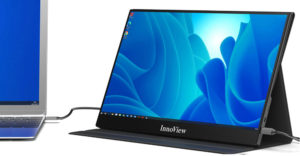
Trolltech CTO Benoit Schillings sees the future of mobile phone communication in the cross-platform solution that Linux can provide. His vision was buffeted recently by a prediction by market research firm ABI that Linux will ship in more than 200 million phones in 2012, up from 8.1 million in 2007.
Based in Oslo, Norway, Trolltech has 200 employees working at offices in California; Beijing,China; Brisbane, Australia; and Berlin and Munich, Germany. Trolltech is a softwarecompany with two product lines: Qt and Qtopia. Qt is a set of tools for cross-platform applicationdevelopment. It includes a C++ class library and tools for cross-platform development andinternationalization.
Qtopia is an application platform for the creation of Linux-based devices.
Clearly, this is a hot and exciting time for mobile Linux. LinuxInsider discussed the roll ofmobile Linux in the developing mobile phone market with Trolltech CTO Benoit Schillings.
LinuxInsider: What is the current market situation for mobile Linux and open phones trends?
Benoit Schillings:
The market is very exciting right now and growing rapidly. With Nokia and Palm’srecent announcements in support of Linux, we see a lot more promise around the growing shipments ofLinux-based devices in the marketplace. We also see a lot of interest in driving innovation aroundnew sets of applications with the availability of open phones. If people could customize their ownphone like they can with laptops and PCs, I think you would see a lot more happy mobile phonesubscribers out there.
LinuxInsider: Are there any other factors driving the rise in mobile Linux?
Schillings:
Another key issue is still the fact that Linux is just a part of the requiredcomponents needed to provide a compelling phone experience, and there has been a lot of confusionbetween the different initiatives working on a complete solution. We do think that the presence ofa larger handset maker will ultimately be the forcing function to a more coherent picture of theLinux handset market.
LinuxInsider: What is driving recent research that forecasts Linux will ship more than 200 million phones in 2012?
Schillings:
As mentioned above, we are seeing bigger bets placed by handset makers such as Motorola, Palm and Nokia as well as operators such as Vodafone, Orange and giant NTT DoCoMo tosupport Linux-based phones. With Linux, phones can be made much more cheaply and with demand fordifferent styles for a wide variety of customers. This becomes a big area of value for all theplayers in the mobile ecosystem.
Linux is also the best choice for operators who are looking for an easier way to evolve theiroffering, since it provides a very neutral ground which was previously not available in the choiceof operating systems. Once the base function of the handset is well in place for the carriers, thequick evolution both in function and volume will be a pretty logical event.
LinuxInsider: What architectural differences separate mobile Linux from other Linux distributions?
Schillings:
Mobile Linux puts some strong requirements on a number of aspects of the operating system.
Power management is a key aspect because the ability to run on a small device is strongly limited by the battery capacity. A lot of work has been done to optimize Linux to do an optimal use of this available power capacity.
Real-time performance is a factor because many handset makers look for solutions which do notrequire a separate processor for the real time part of the handset — mostly the base band and signalprocessing part. Linux was originally not designed as a hard real-time operating system, andsignificant effort has been done to allow Linux to run in such a manner, either by modifying theLinux base itself or by virtualizing Linux on top of a hard real-time kernel.
Boot speed is another factor because a handset has to be up and running in maybe less than 15seconds. This forced a lot of optimization on the boot process for mobile Linux.
The footprint, in terms of memory and space allocation, needs to be much smaller on a device.
Flash-based file system optimization is key. On a desktop memory this not as important, but on amobile device it needs to be optimized to be smaller.
The ability to execute in place right from ROM to RAM is essential.
LinuxInsider: What innovations in the Qtopia platform are driving use of this software over other products?
Schillings:
Qtopia software delivers a strategic business advantage for its customers byempowering continuous and efficient product innovation. Qtopia’s proven APIs enable fast,repeatable embedded Linux development. Additionally, Qtopia is used not only in mobile phones butalso in other Linux-based devices such as set top boxes, medical devices and personal videorecorders to allow software standardization across a variety of devices. This flexibility, combinedwith the support of thousands of developers in its community, means Qtopia is seen as the platformof choice by more than 80 device makers today.
LinuxInsider: What has been the response from developers to the Qtopia Greenphone?
Schillings:
Greenphone is not a consumer device, but rather a Linux-based software development platform that can be used to develop applications. Software developers who are creatingapplications for Linux-based mobile phones can use Greenphone to easily see their applications runon a full-function device. Greenphone opens the door for adding new functions to existingapplications by providing access to the code of the basic phone applications, such as the dialer,address book and more.
Developer response to this product has been overwhelmingly positive, especially since it is thefirst development platform of its kind. One cool new way we are encouraging even more innovation onGreenphone is through our newest contest, the Qtopia Greenphone Developer Challenge. You can findall the details at [the Trolltech Web site].
LinuxInsider: Where do you see the Linux phone market going over the next few years?
Schillings:
We think ABI Research’s recent prediction of 230 million Linux-based mobile phones by the year 2012 is actually modest. Most of the activity is in China today, where millions ofphones are already Linux-based, and the rest of the world will follow, especially when you considerthe big bet Motorola has already placed on Linux as well as Samsung and Nokia.
LinuxInsider: What factors are impeding the further acceptance of Linux over other platforms in the communications/mobile phone industry?
Schillings:
That’s easy — it’s the power of Microsoft and Nokia in the mobile phone market.
LinuxInsider: Do you have any other comment to add?
Schillings:
Even if most of the focus today is on mobile handsets, we strongly feel thata key feature of Linux is how widespread it is across a number of device categories, from VoIP toPC to Digitial VCR, etc. This puts Linux in a unique place to be the cross-device solution.




















































